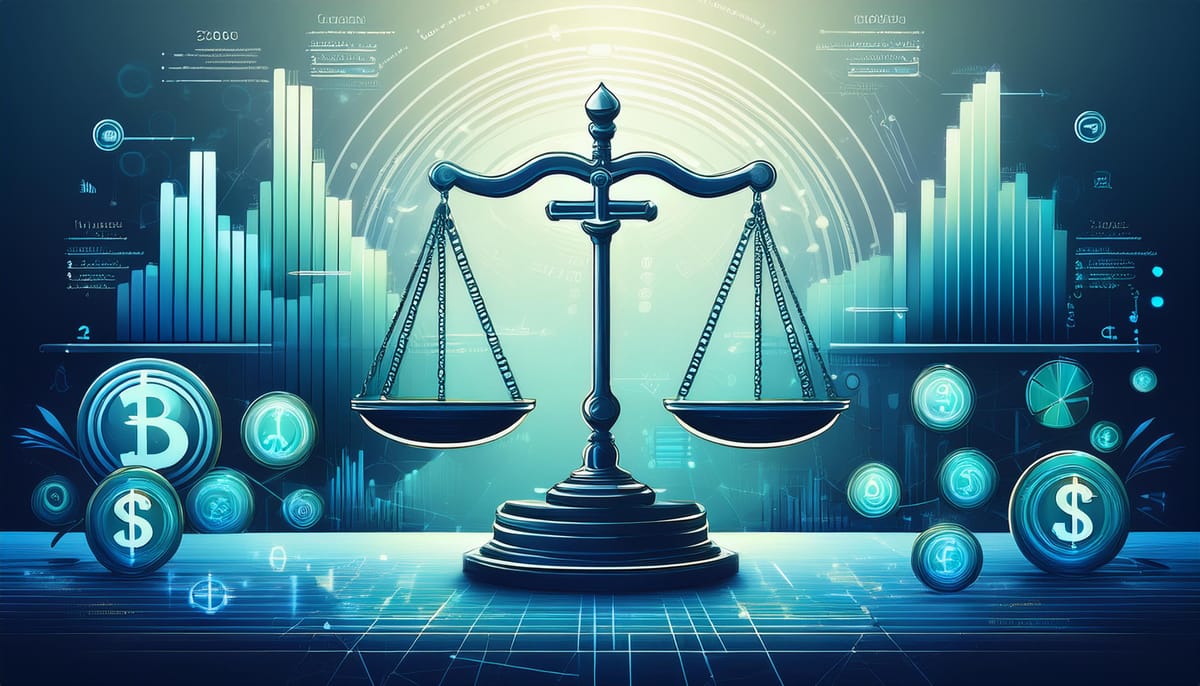Bear Market: When the Bulls Go into Hibernation
Imagine a bustling stock market, filled with the excited chatter of bulls charging forward. Now picture those same bulls suddenly retreating to their caves, leaving behind a quieter, more somber landscape. This is the essence of a bear market - a period when optimism fades, and caution reigns supreme in the financial world.
But what exactly is a bear market, and why should investors care? Let's dive into this crucial concept that shapes the ebb and flow of our financial markets.
Defining the Bear: More Than Just a Grumpy Animal
A bear market isn't just a bad day on Wall Street. It's a prolonged period of decline in the stock market, typically defined as a drop of 20% or more from recent highs in major market indices. Think of it as an extended winter in the financial world, where growth slows and investors bundle up to weather the storm.
This chilly climate doesn't just last for a day or two. Bear markets often stretch for months or even years, averaging about 9.6 months in duration. During this time, pessimism spreads like a cold wind, affecting investor sentiment and often coinciding with broader economic downturns.
The Anatomy of a Bear: Key Characteristics
Just as a real bear has distinct features, a bear market comes with its own set of characteristics:
- Widespread pessimism: Like a contagious yawn, negative sentiment spreads among investors.
- Increased volatility: The market becomes as unpredictable as a bear waking from hibernation.
- Economic indicators flashing red: Rising unemployment and slowing GDP growth often accompany bear markets.
- Falling corporate profits: Companies tighten their belts as earnings forecasts turn gloomy.
- Shift to safety: Investors seek shelter in defensive sectors and safe-haven assets, much like animals seeking refuge during a storm.

Market volatility: A turbulent financial landscape with opportunities amidst the chaos.
During these bearish times, we often see a "flight to quality." Investors, like birds migrating for winter, move their funds from riskier assets to more stable investments such as government bonds and gold.
What Wakes the Bear? Causes of Market Downturns
Bear markets don't just appear out of nowhere. They're often triggered by a complex interplay of economic, political, and social factors. Let's explore some of the primary culprits:
Economic Recessions: When the economy catches a cold, the stock market often comes down with the flu. Slowing economic growth leads to reduced corporate profits and lower stock valuations.
Monetary Policy Changes: Central banks, like skilled puppeteers, can influence market trends. When they raise interest rates to fight inflation, it can lead to reduced borrowing and spending, potentially awakening the bear.

Monetary policy: the delicate balance between economic growth and financial stability, managed by central banks to shape our economy.
Geopolitical Events: Wars, terrorist attacks, or major political shifts can create uncertainty and fear in the markets. These events can shake investor confidence like an earthquake toppling a house of cards.
Market Bubbles Bursting: When speculative bubbles in certain sectors pop, it can lead to widespread selling. Remember the dot-com bubble of 2000? That's a textbook example of a bubble bath gone wrong.

Market bubble: A mesmerizing yet precarious financial phenomenon that can both create and destroy wealth.
Pandemics or Natural Disasters: These events can disrupt economic activity and supply chains, leading to market downturns. The COVID-19 pandemic in 2020 caused one of the fastest transitions to a bear market in history, proving that sometimes, reality is stranger than fiction.
A Walk Through the Bear's Den: Historical Bear Markets
To truly understand bear markets, we need to look at their tracks throughout history. Here are some of the most significant bear markets that have left their mark on the financial landscape:
The Great Depression (1929-1932): The granddaddy of all bear markets. This 34-month downturn saw the Dow Jones Industrial Average fall a staggering 89% from its peak. It took 25 years for the market to recover to pre-crash levels, reminding us that sometimes, the bear's hibernation can last longer than we'd like.
The Oil Crisis (1973-1974): When OPEC flexed its muscles with an oil embargo, the S&P 500 took a 48% nosedive over 21 months. This bear market introduced many to the concept of stagflation - a nasty combination of high inflation and economic stagnation.
The Dot-Com Bubble Burst (2000-2002): The internet boom turned to bust, with the tech-heavy Nasdaq Composite index plummeting 78% from its peak. This 31-month bear market was a harsh reminder that what goes up must come down, especially when valuations detach from reality.
The Global Financial Crisis (2007-2009): Triggered by the subprime mortgage crisis, this 17-month bear market saw the S&P 500 drop 57%. It led to the Great Recession, leaving a lasting impact on the global economy and changing the way we think about financial risk.
The COVID-19 Pandemic (2020): This bear was quick but fierce. The S&P 500 fell 34% in just 33 days as the world grappled with an unprecedented global health crisis. However, it also proved to be one of the shortest bear markets on record, lasting only 33 days before a new bull market began.
Dancing with the Bear: Investing Strategies for Downturns
While bear markets can be intimidating, they don't have to maul your portfolio. Savvy investors can find opportunities even in these challenging times. Here are some strategies to consider:
Dollar-Cost Averaging: This approach involves regularly investing a fixed amount, regardless of market conditions. It's like steadily filling a bucket with water - even if the market level fluctuates, you're consistently adding to your investments.

Dollar-Cost Averaging: A step-by-step approach to potentially lower investment costs and manage market volatility over time.
Defensive Sector Focus: Sectors like utilities, consumer staples, and healthcare often outperform during downturns. Think of these as the comfort food of the investment world - they might not be exciting, but they offer sustenance when times are tough.
Diversification: Spreading your investments across different asset classes is like not putting all your eggs in one basket. It can provide stability and cushion against steep losses in any single area.

Diversification: Balancing risk and reward across multiple investment assets for a resilient portfolio
Long-Term Perspective: Remember, historically, the overall US stock market has always recovered. Panic-selling during declines can be like jumping off a roller coaster at its lowest point - you miss the ride back up.
Embracing the Bear: Lessons from Market Downturns
Bear markets, while challenging, offer valuable lessons for investors. They remind us of the cyclical nature of financial markets and the importance of patience and resilience. Like seasons in nature, bull and bear markets come and go, each playing a crucial role in the ecosystem of finance.
Understanding bear markets helps us prepare for and navigate future downturns. It teaches us to temper our expectations during boom times and maintain hope during busts. Most importantly, it reminds us that in the world of investing, as in life, change is the only constant.
So the next time you hear rumblings of a bear market, remember: it's not just a time of retreat, but an opportunity for reflection, recalibration, and perhaps even growth. After all, every bear market in history has eventually given way to a bull. The key is to stay informed, stay calm, and stay invested in your long-term financial goals.





